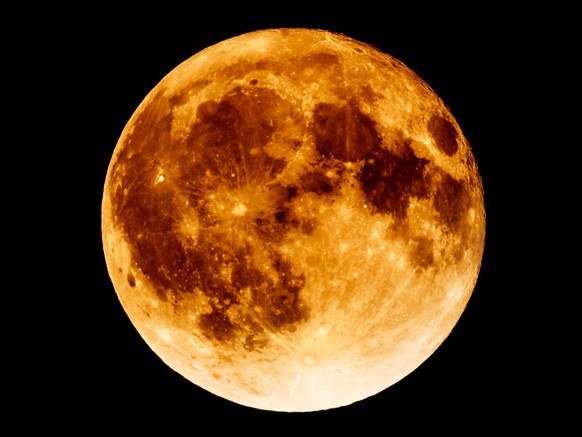The first lunar eclipse of 2018 is occasional celestial wonder which occurred today. Today marked a total lunar eclipse, but overlapped with supermoon and a blue moon as well and this happening is being tagged as super blue blood moon and is an infrequent lunar event. Super moon phenomenon is when the Moon appears upto 14 per cent larger and 30 per cent brighter and it is super blue blood moon is because this will also be a total lunar eclipse, when the satellite has reddish tinge to it. If Sun, Moon and Earth are aligned in one path, it is called eclipse. When Earth comes between the Sun and the Moon, it is called total lunar eclipse.

Totally eclipsed moons are called blood moons because they tend take on a reddish hue due to how Earth’s atmosphere scatters blue light, but allows red wavelengths to pass through.
When a full moon happens twice in a month, the second full moon is called a blue moon. The first full moon of January occurred on the night of Jan. 1 or the morning of Jan. 2, depending on your location. This also led to the term ‘Once in a blue moon’, as it is relatively rare to witness.
A blue moon (a second full moon in a calendar month), a super moon (when the moon is remarkably close to Earth, making it larger and brighter) and a blood moon (when the moon appears red) will all overlap.
Wonders
- The first "Super Blue Blood Moon" to occur in about 150 years. The last time it occurred was in 1866. And you have to wait till December 31, 2028 to witness the next one. And it won't be quite as large since the moon will not be at its closest point to Earth. And after 2018, another will happen on January 31, 2037, a total of 17 hours before perigee. The total lunar eclipse will make the moon appear red, a blood moon.
- The reddish tint -- or blood moon -- occurs due to "the effect of all the sunrises and sunsets all around the planet reflecting off the moon.
- The moon appears 14% closer to the earth and 30% brighter during this lunar phenomenon
Blue Moons are not as infrequent as the old saying "once in a blue moon"; they occur about once every 2.7 years, because the number of days in a lunation (new moon to new moon) is a bit less than the usual calendar month — 29.53 days as opposed to 31 or 30 days (except for February, which has 28 days, so a blue moon cannot occur). A sequence of 12 lunations adds up to 354.36 days, against the 365.24 days in a year. The discrepancy adds up over time, until a year will have 13 lunations as opposed to 12.
For some observers, 2018 will feature two Blue Moons — one in January and one in March (with no full moon in February).
Happy Super Blue Blood Mooning!!! 😊
very nice picture, my grandpa has also seen it red, i didn't but i've seen it very full. nice work posting, friend
Downvoting a post can decrease pending rewards and make it less visible. Common reasons:
Submit
Thanks Johnny! @Johnnydabaus
Yes it was large like huge!
Downvoting a post can decrease pending rewards and make it less visible. Common reasons:
Submit
we posted the same topics by coincidence
Downvoting a post can decrease pending rewards and make it less visible. Common reasons:
Submit
It was hot topic! Never mind :) @kpd-244
Downvoting a post can decrease pending rewards and make it less visible. Common reasons:
Submit
Good post.... I have also watched that red blood mon.
Downvoting a post can decrease pending rewards and make it less visible. Common reasons:
Submit
Nice! When something happen after so long, you should not miss it. @sanju1846
Downvoting a post can decrease pending rewards and make it less visible. Common reasons:
Submit
today's hot topic is lunar eclipse
Downvoting a post can decrease pending rewards and make it less visible. Common reasons:
Submit
It was!! @jyoti-thelight
Downvoting a post can decrease pending rewards and make it less visible. Common reasons:
Submit
Your Post Has Been Featured on @Resteemable!
Feature any Steemit post using resteemit.com!
How It Works:
1. Take Any Steemit URL
2. Erase
https://3. Type
reGet Featured Instantly – Featured Posts are voted every 2.4hrs
Join the Curation Team Here | Vote Resteemable for Witness
Downvoting a post can decrease pending rewards and make it less visible. Common reasons:
Submit
it was so cloudy in Nepal,couldnt see the moon
Downvoting a post can decrease pending rewards and make it less visible. Common reasons:
Submit